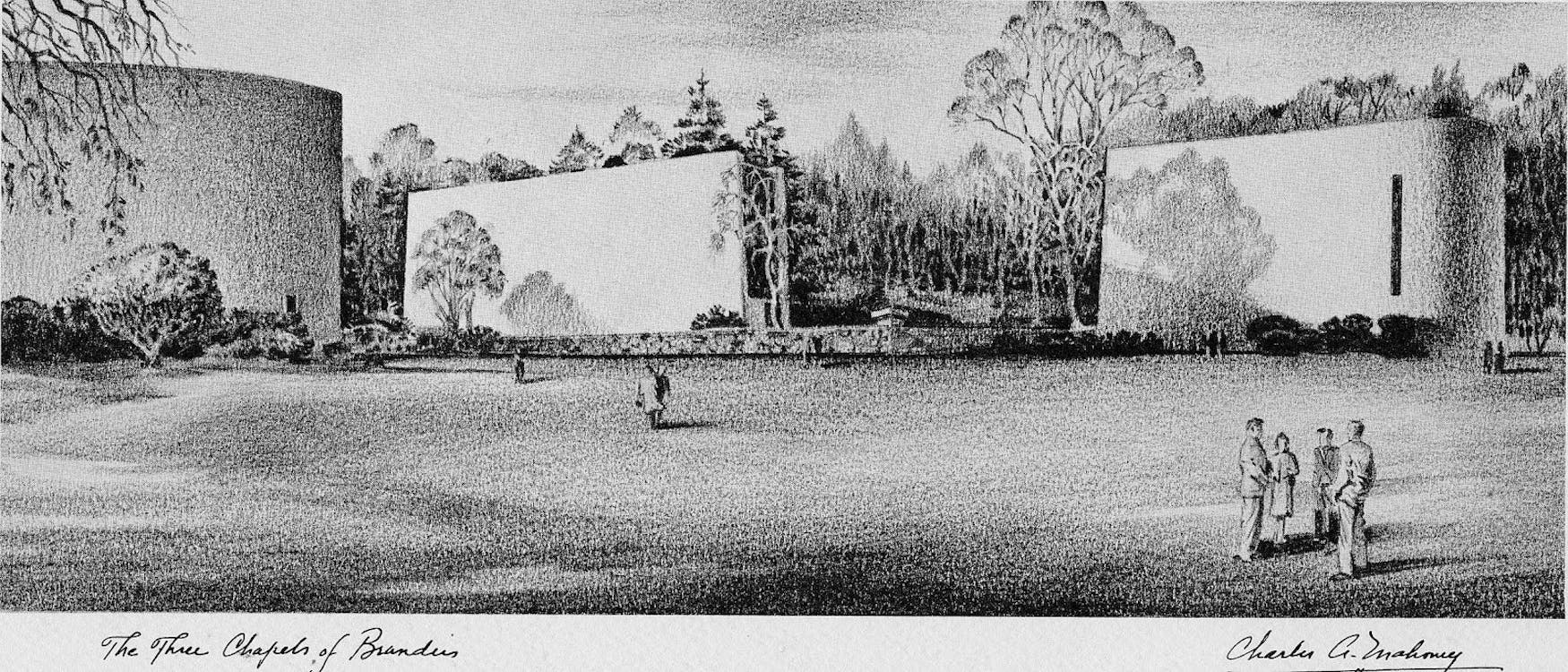Did you know?: A look at the untold truths of Brandeis history
Our continuously growing campus is filled with myths and hidden stories, some of which are known by all, and some of which have managed to remain a secret.
On March 16, 1966, tragedy struck the Brandeis community as the lives of two were taken at the center of campus. Graduate anthropology students Elgin N. Annis, 25, and Dora Roslow, 22, took off from Hanscom Field in Bedford in a small airplane. They spent some time flying around the Brandeis campus, before clipping the plane on the roof of the Goldfarb Library and hitting a tree. It was said that there were between 30 and 40 witnesses. The airplane then crashed into the concrete embankment of the reservoir and caught on fire. This man-made reservoir was in the same location as the current Usdan Student Center, which was opened in 1970.
The three chapels at Brandeis were one of the most contested additions to the campus, as it began to grow. The original plan was for one building with separate sections for students of different religions with different seating areas and altars. That idea was not taken well, and an alternative plan for just one large Jewish structure was proposed. Many students who were opposed to the decision protested against it. They wanted some sort of interdenominational space that would provide for multiple groups of students. Some Catholic representatives also protested because they were unhappy with a Catholic chapel being built on Jewish soil. In the end, the University went with three structures exactly equal in size that will never cast shadows over one another for the structures. They are loved by the community, as is as the heart- shaped pond that can be found in the middle.

BLUEPRINT: The original design for the three-pronged chapel.
Brandeis used to have a building called the “Banana House,” where the current science complex. The building gained its name because of the green and yellow coloring and crescent shape. It used to be a small animal clinic and eventually transitioned into the first university bookstore and student newspaper offices. This structure was next to the grape arbor and wishing well, both of which can also no longer be found.

WELL: Students study near old the wishing well.
Many often speculate that the Spingold Theater Center was built to look like a top hat worn by a traditional entertainer. This myth can be debunked because the original architectural plans for the building did not include the same circular structure that we see on the building today. One more common arts building myth is that the Slosberg Music Center was built to resemble a piano. This myth has been debunked, as the building does not and has not ever held 88 windows.

Brandeis’ first president Abram Leon Sachar molded the University into what it is today. He built it from the ground up, playing a pivotal role in the school’s foundation until his death. Upon his passing, both Abram Sachar and his wife Thelma Sachar were buried in the Sachar Woods on campus.
As this campus continues to grow, more and more myths rise to the surface. In our 75th year, it is vital to look back at where this university started. While many of the buildings have changed over time, the stories remain part of the University’s identity.



Please note All comments are eligible for publication in The Justice.